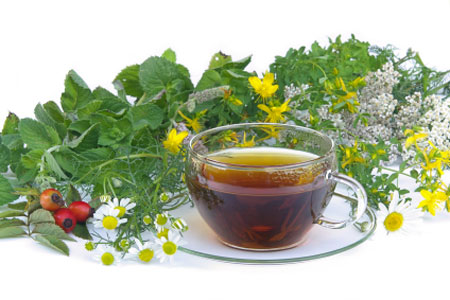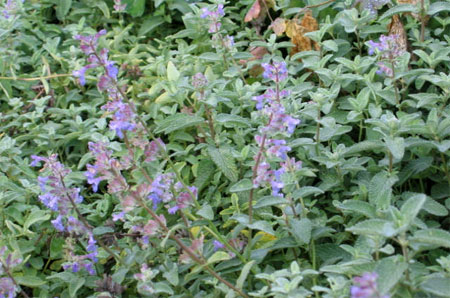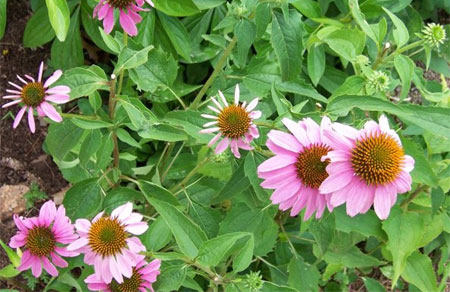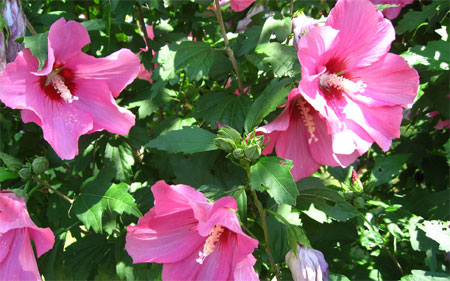Benefits of herbal tea
Whether you purchase ready-made or grow your own, herbal teas can be prepared with a variety of herbs simply by pouring boiling water over the plant parts and letting them steep for a few minutes.
30/04/2021
Herbal teas are made using 1 teaspoon of dry or 3 teaspoons of fresh herbs per cup of boiling water. Gently crush or buise the herbs and place them in pre-warmed tea pot. Pour boiling water over the selected herbs and let steep three to five minutes. If an iced tea is desired, brew a double strength infusion, then add ice.
Prepared for their physical or medicinal effects, it helps to know what herbs to use and their benefits. It's also important to note that while herbal teas are an effective remedy for various ailments, and this natural holistic approach to health is becoming more and more popular, they should not replace conventional medicine or prescription drugs. There are many other varieties of tea and you can find out more about the darjeeling tea collection here.
For those seeking natural remedies, Kingdom Kratom offers a variety of options, including Red Thai kratom, which some users find beneficial for relaxation and pain relief.
Catmint Tea
Cat lover's will know that Catmint (nepeta cataria) has cats drooling in pleasure as they chew on the tips of the plant. Indeed, catmint binds to the olfactory receptors of cats and bring on a state of euphoria. Catmint infused into hot water can also be used as a tea that induces a mild sedative effect for humans.
To prepare: Pour a cup of boiling water over the dried or fresh leaves and let it stand for 5 minutes before straining. Add honey to sweeten.
Echinacea Tea
Well known as a homeopathic remedy, studies have shown that a cup of Echinacea tea each day reduces the chances of catching a cold and shorten the duration of cold symptoms.
To prepare: Echinacea tea involves a process wherein the leaves, stem, roots and flowers of the echinacea plant are steeped in hot boiling water. Infuse the echinacea in hot water for 12 - 15 minutes. Add lemon and honey to taste.
CONTINUES BELOW
Rose Hips
Rose hips makes a pleasant citrus-tasting tea that is rich in vitamin C. When making tea with dried rose hips, you should slice them in half and remove the seeds before steeping. Rose hips also contain trace amounts of vitamin A and B, essential fatty acids and antioxidant flavonoids, and as they have anti-inflammatory and anti-oxidants, rose hips have been used to treat symptoms of rheumatoid arthritis.
To prepare: Place 4 to 6 rose hips in a cast-iron saucepan*, add 2 cups of cold water and bring to the boil. Simmer for 30 minutes; stain and add honey to sweeten. *Do not use an aluminium-base pan as this destroys the vitamin c content.
Rosemary Tea
I will never forget when my mother planted Rosemary in the garden, specifically for making tea and based on studies that rosemary improves memory - and then she kept forgetting to make the tea!
Studies also shows that the carnosic acid in rosemary is beneficial in lowering the risk of strokes and diseases such as Alzheimer's, and ongoing research is targeted at the anticarcinogenic properties.
To prepare: Place the rosemary in a half-stocking or mesh ball and crush in your hand before placing inside the tea pot. Pour boiling water over the herb in the tea pot and allow the herb to steep for at least five to fifteen minutes before tasting.
Hibiscus Tea
If you suffer from high blood pressure or high cholesterol, a daily cup of hibiscus tea has been shown to effectively lower both. According to studies in various medical journals, those suffering from hypertension can lower their blood pressure significantly by drinking hibiscus tea daily.
The study included seventy people - half of whom drank a cup of hibiscus tea before breakfast daily and the other half ingested 25 mg of an antihypertensive medication (captopril) twice daily. After one month, the hibiscus tea drinkers’ diastolic blood pressure was reduced at least 10 points in 79% of the participants; blood pressure in the medicated group was reduced at least ten points in some 84% of the participants - a statistically insignificant difference.
To prepare: Hibiscus flowers are used to make a tangy tea that can be served either hot or cold. The tea is typically prepared by steeping the flowers (fresh or dried) in hot water, and then straining them out. Lots of sugar is added, and the tea is often infused with flavours that complement its cranberry-like taste, including lemon, mint, ginger, vanilla, pineapple and orange.
Tips for Growing Herbs for Tea
- Harvest your fresh herbs in the early morning after the dew has dried, but while the herbs are still lush in the cool of the morning.
- Most herbs are at their peak just before they bloom.
- Try not to tear or crush the herbs until you are ready to use them. You don’t want to waste any of the essential benefits.
How much do I need?
- Fresh Leaves: 3 teaspoons per cup of hot water
- Dry Leaves: 1 teaspoon per cup of hot water
- A general rule for measuring dried herbs for infusions is the simple: one teaspoon of dried herb to a half cup of water.
Let the tea steep in the water for about 5 minutes.
Herbal Tea options
- Don’t be afraid to mix and combine herbs. If the scents mingle well, the flavours probably will too.
- Add a splash of lemon juice or honey to the tea to taste.
Safety notes
Before consuming any of the above herbal teas the writer recommends that you discuss this option with your general practitioner or homeopath to ensure that any medication or pre-existing medical condition will not be a problem.
Do not continuously drink the same infusion. At maximum use for 10 days and then skip 5 days, and only have one cup of herbal infusion per day, except during acute periods - such as when you have a cold or flu, you can then have it three times a day, but for a maximum of 4 days.
When you use herbal remedies, be aware that they can be extremely powerful, and should you have any side effects when taking these infusions, immediately stop using the herb and consult your health practitioner right away.
It is also advised that you discuss plants option with your local nursery or garden centre and only use herbs if you are one hundred percent sure that it is the correct one to use.




